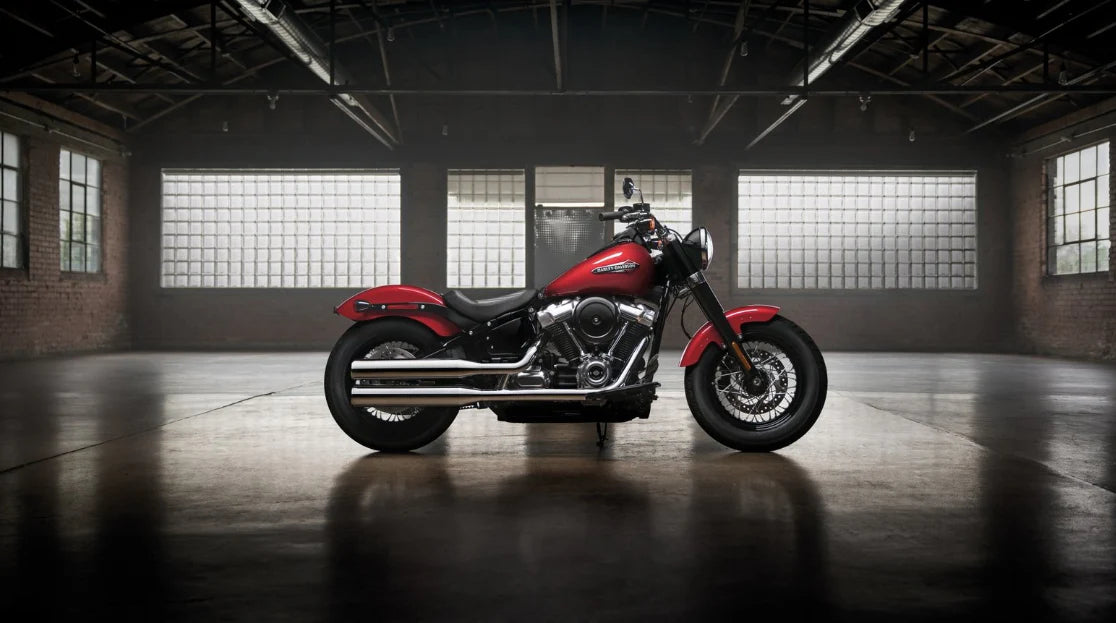Do I have to ride my motorcycle with headlights on? This interesting question has made riders think about this concept. Also, safety personnel and authorities have shed light on this issue while understanding the technicalities of this little detail. As you rev up your engine and hit the open road, the decision of whether to illuminate your path with those glaring headlights isn't just a matter of personal preference. Instead, it ensures safety, legal abidance, and ease of travel. In this article, we dive into the argument surrounding motorcycle headlight usage, shedding light on the various perspectives that shape this compelling discussion. Let's get started!
Visibility is Key while Traveling!
Imagine that you're cruising down a picturesque highway, wind in your hair, and the sound of your motorcycle's engine beneath you. As the sun dips below the horizon, a fellow motorist glances your way. Those headlights of yours are not just for show. They serve a fundamental purpose of increasing the visibility for others and you.

Human perception is a fascinating interplay of cognition and sensory input. Our brains are wired to process visual cues, and this is where the debate gains its scientific footing. "Do I have to ride my motorcycle with headlights on?" Research suggests that a lit motorcycle creates a powerful contrast against its surroundings, making it more noticeable to other road users. This heightened visibility becomes especially crucial in conditions of low light or inclement weather.
Introducing the concept of Daytime Running Lights (DRLs)! These are not just fancy accessories but they significantly enhance the visibility of motorcycles during daylight hours. By augmenting the motorcycle's presence on the road, DRLs have been linked to a reduction in accidents and an enhanced safety profile.
Keeping the Headlights on Safety First!
So, is there concrete evidence to support the assertion that riding with headlights on truly enhances safety? The answer, backed by critical data, is a resounding yes! Many studies have consistently demonstrated a correlation between illuminated motorcycles and a lower likelihood of accidents. The rationale is simple: A well-lit motorcycle captures the attention of drivers and pedestrians alike, reducing the chances of collisions born out of a lack of visibility.
Imagine navigating a bustling urban area during twilight. The ambient lighting isn't sufficient to make you stand out, and this is where your motorcycle's headlights step in as your silent protectors. By alerting others to your presence, those beams of light become an indispensable component of your safety arsenal.
Moreover, as the weather takes an unpredictable turn, your headlights act as steadfast companions. Rain, fog, or a sudden downpour can obscure your motorcycle from view, increasing the likelihood of accidents. With your headlights piercing through these environmental challenges, you maintain a level of visibility that could mean the difference between a smooth ride and a perilous situation.
Legal Issues: Navigating via Headlights
The question of whether to ride with headlights on isn't merely a philosophical ponder. It is also a legal consideration that varies from jurisdiction to jurisdiction. As you gear up for your next adventure, it's essential to familiarize yourself with the specific regulations governing motorcycle headlight usage in your region.

"Do I have to ride my motorcycle with headlights on?" The answer hinges on where you're riding. While some areas mandate the use of headlights at all times, others may not be as stringent. National and regional variations dictate the extent to which headlights are obligatory, and ignorance of these regulations can lead to unintended legal repercussions.
Understanding the legal requirements isn't just about avoiding fines. It's about aligning with the broader goal of road safety. Motorcycle headlight laws aren't arbitrary rules instead they're designed to enhance visibility, reduce accidents, and ensure the well-being of all road users.
Advancement and Future Trends
As technology continues its relentless march forward, motorcycle lighting systems have evolved far beyond their conventional origins. Adaptive headlights, once the realm of luxury automobiles, are now making their way into the world of motorcycles. These advanced systems pivot as you lean into corners, illuminating the road ahead with precision.
Integrated safety systems are also shaping the future of motorcycle headlight usage. Imagine a scenario where your motorcycle's headlights sync with other safety features such as collision avoidance systems to create a seamless shield of protection. The headlights, once a solitary element, are now integral to a holistic safety ecosystem.
So, what lies ahead for the age-old question of riding with headlights on? Will motorcycles become even more visible, further reducing the risk of accidents? The future holds exciting possibilities as technology and innovation continue to intertwine with the rider experience.
Important Tips for Riding with Headlights on the Road
Practicality meets the principle when it comes to riding with headlights on. If you're thinking about whether to embrace this practice, consider these practical tips to optimize your experience:
- Select the Best Settings: Determine the optimal settings for using your headlights based on ambient lighting conditions. Dimmer settings might suffice during the day, while brighter ones become indispensable as darkness descends.
- Battery Use: Extended rides might raise concerns about battery drain. Strike a balance by periodically toggling your headlights or investing in energy-efficient options.
- Taking Note of Glare: As much as headlights enhance visibility, they can also create glare for other road users. Angle your lights slightly downward to mitigate this effect and ensure a safe ride for everyone.
The Pros and Cons of Riding with Headlights On
In the realm of motorcycle headlight usage, there's no one-size-fits-all answer. The decision to ride with headlights on is a delicate balancing act between safety benefits and personal choices. As you embark on your next adventure, consider the insights shared by seasoned riders and safety experts.

The consensus often leans toward prioritizing safety without sacrificing individuality. The road becomes a safer place when each rider takes responsibility for their visibility, contributing to a harmonious coexistence among all road users.
Conclusion
In the grand scenario of motorcycle culture and safety considerations, the question of whether to ride with headlights on occupies a central position. "Do I have to ride my motorcycle with headlights on?" The answer transcends the confines of mere obligation. It's an opportunity to align with the principles of safety, camaraderie, and technological progress. As you prepare for your next thrilling journey, let your headlights illuminate not only the path ahead but also the ongoing dialogue within the vibrant world of motorcycling.


